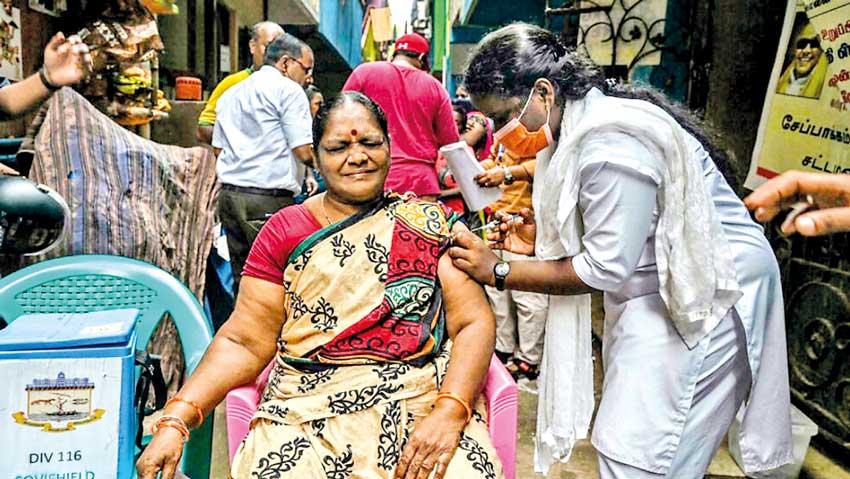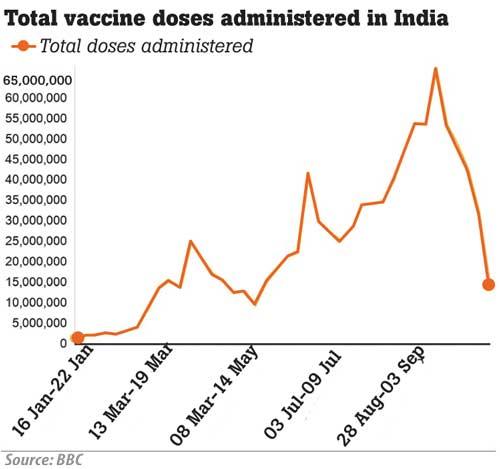22 Oct 2021 - {{hitsCtrl.values.hits}}

According to the government, around three-quarters of adults in the country of 1.3 billion people have had one shot and around 30 percent are fully vaccinated.
However, hundreds of millions of Indians under 18 -- who make up some 40 percent of the population -- have not had a single shot.
 India suffered a huge spike in cases in April and May, reporting more than 400,000 infections and 4,000 deaths per day, with many hospitals unable to cope and crematoriums overwhelmed.
India suffered a huge spike in cases in April and May, reporting more than 400,000 infections and 4,000 deaths per day, with many hospitals unable to cope and crematoriums overwhelmed.
Cases have since fallen sharply, with fewer than 20,000 infections per day, and most activity has returned to normal. Mumbai, one of India’s myriad teeming cities, recently reported zero deaths in a day for the first time since the pandemic began. The government was reportedly set to celebrate the milestone with Prime Minister Narendra Modi thanking health workers, special announcements at railway stations and airports and monuments lit up in the national colours.
India began vaccinations in January and after a slow start, it is now administering around eight million jabs per day.
“During the first wave, I remember hearing people talking about whether coronavirus was real or not,” said Reham Ali, a taxi driver in New Delhi who said he has had one shot.
“Now, people know that it is and there is less hesitancy. The second wave was an eye-opener.”
Exports of vaccines -- halted earlier this year -- have tentatively resumed, with officials saying the “pharmacy of the world” will be back in full swing again in 2022
Most restrictions on activity have been lifted, with crowds celebrating India’s main religious festival season -- an important time for the battered economy -- for the first time in two years.
This has sparked concerns about a new wave of infections and a renewed push by the government to push people to get their second shots.
New Delhi (AFP), 21 Oct, 2021
15 Nov 2024 25 minute ago
15 Nov 2024 46 minute ago
14 Nov 2024 2 hours ago
14 Nov 2024 3 hours ago
14 Nov 2024 3 hours ago